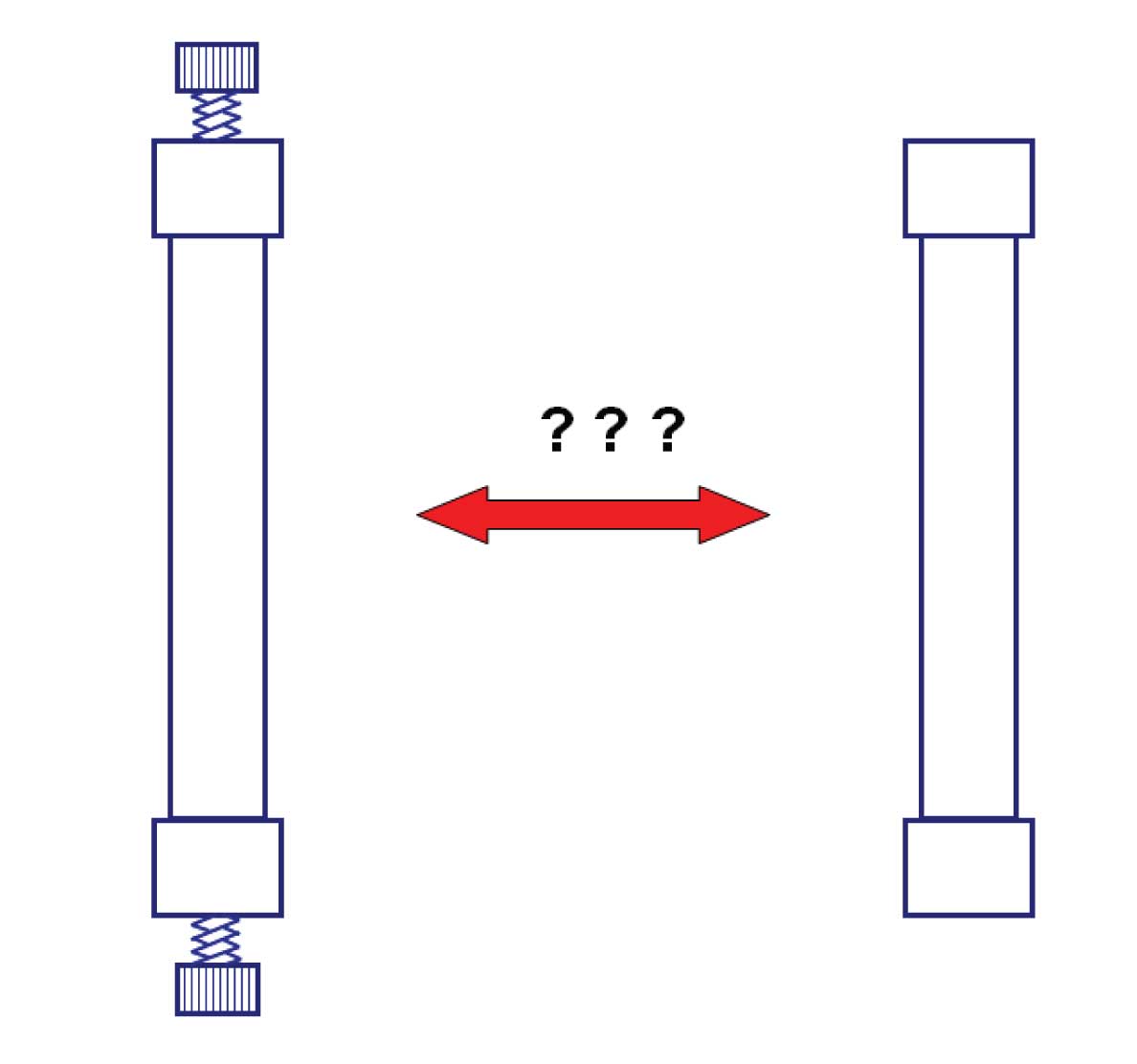I recently had an inquiry from a reader of 'HPLC Solutions' that comes up with some regularity in the HPLC troubleshooting classes that I teach: “Will I damage the column by getting air in it?” Let’s consider the possibilities for a moment. One possible source of air is injection from an empty vial. Another source is forgetting to put the plugs in the ends of the column when storing it. A third possibility is that you pump the column dry if you run out of mobile phase. What happens in each of these cases?
Understanding Air Entry in HPLC Columns
Air can enter HPLC columns through various means, but is it harmful? Let’s explore common ways air infiltrates columns.
Effects of Air Injection from Empty Vials
What happens if you try to inject from an empty vial? You fill the needle with air – perhaps 100 µL at most. When the injection is made, this air goes in the column, but it is compressed into nothing under typical column pressures of >100 bar (>1500 psi). I remember having this challenge in a prior life when working for Technicon, a company that specialized in doing microchemistry in air-segmented liquid streams. I wanted to inject one of those air-segmented streams and wondered what would happen. The answer – nothing. The air is compressed during injection and dissolves in the mobile phase. What was more worrisome in those late-1970s days was the pressure pulse that occurred during this process. It was not good for the column. Today’s columns, however, are much less pressure-pulse sensitive, so this is not of concern. Be aware, however, that when the mobile phase comes back to atmospheric pressure after it leaves the column, the air may come back out of solution as bubbles. This is not good for a stable baseline with many detectors, so you may need to use a restrictor after the detector to keep enough pressure on the flow cell to prevent outgassing. Generally ≈5 bar (≈75psi) is adequate for this.

The Role of Column Plugs in Air Prevention
Forgetting to plug column ends during storage may introduce air, though it’s typically not damaging. Here’s why.
If you forget to put the plugs in the column when it is stored, it is possible that a little of the mobile phase at the end of the column may evaporate, leaving air in the column. This rarely is a problem. When the column is re-installed, the degassed mobile phase passing through the column under pressure will redissolve this air and correct the problem. You may get a few bubbles out of the column for 5-10 min, but it should settle down pretty quickly. A potential problem that is real, however, is if you leave non-volatile buffers in the column when it is stored. If the volatile components of the mobile phase evaporate, solid buffer salts may remain. If this happens, the column is likely ruined. Once crystals of buffer form in the pores of the column, they will not come out – there is not sufficient circulation of mobile phase in the pores to redissolve the mobile phase. You can avoid this problem by never storing a column with buffer in it.
Pumping the Column Dry: How It Happens and What to Do
Running out of mobile phase can lead to pumping the column dry. Let’s discuss how this affects your column and how to prevent it. When a reservoir is empty, the pump fills with air and one of two things happen. If you have set a low-pressure shut-off, it will be triggered and the pump will shut down when the mobile phase runs out. If you don’t use the low-pressure limit, the pump will continue cycling, but HPLC pumps are designed to pump liquid, not air, so little, if any, air will reach the column. In the worst case, you’ll have a bit of air in the column that will have to be removed in the same manner as when the end plugs are left off.
Summary: Does Air Really Harm Your HPLC Column?
The conclusion of this discussion is that air is unlikely to damage silica-based column, such as those we use for reversed-phase HPLC separations. Gel-based columns, such as those used for gel filtration chromatography may be a different story, but for most of us, air in a column is just an inconvenience. Be sure to used degassed mobile phase and the occasional bit of air in the column will be redissolved as fresh mobile phase passes through the column.
This blog article series is produced in collaboration with John Dolan, best known as one of the world’s foremost HPLC troubleshooting authorities. He is also known for his research with Lloyd Snyder, which resulted in more than 100 technical publications and three books.




